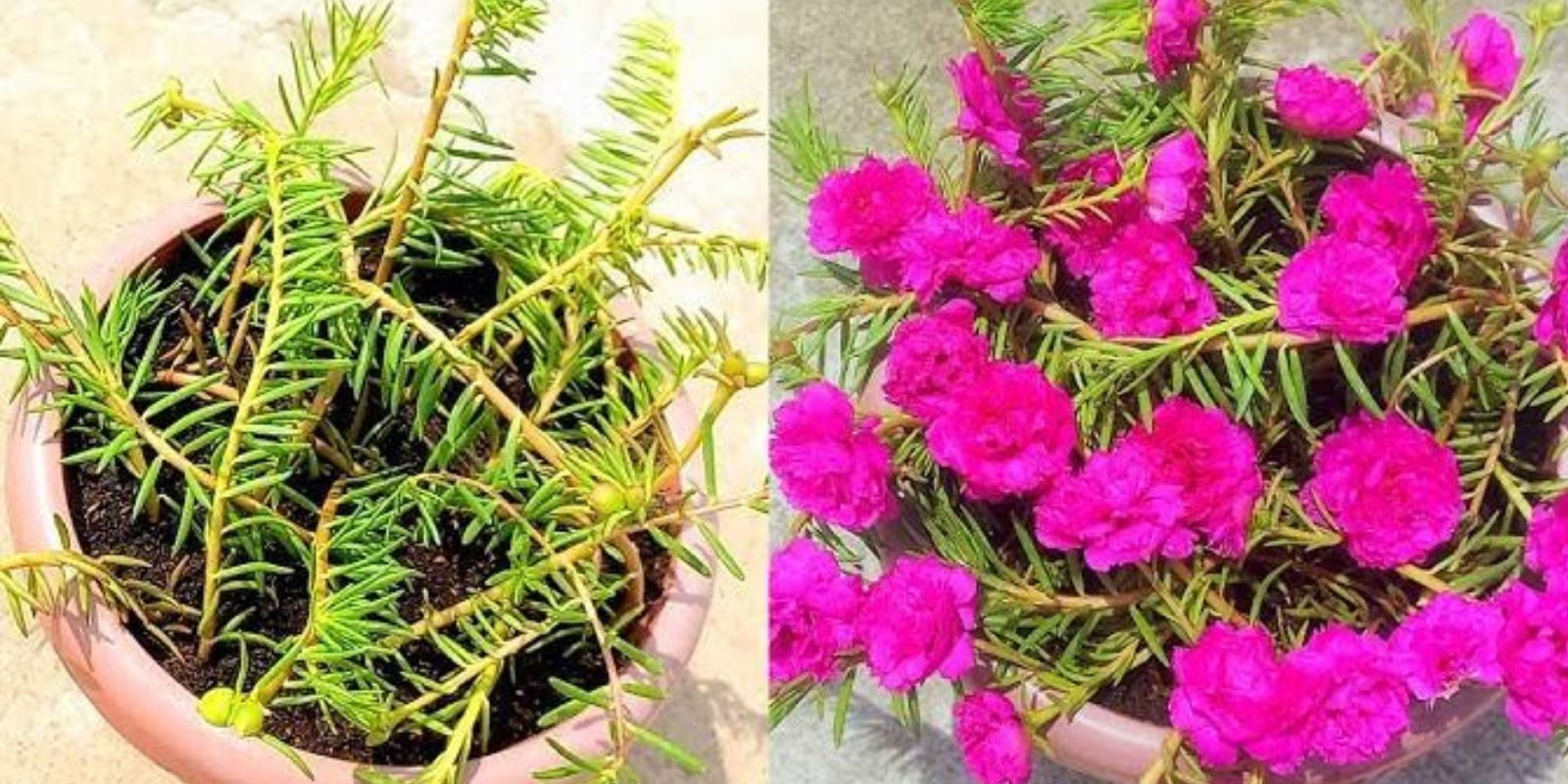Portulaca Grandiflora, also known as moss rose, is a favorite among gardening enthusiasts for its vibrant, delicate flowers and resilience. But what if you could grow this stunning plant in water and enjoy its blooms without the need for soil? This unique and minimalistic gardening approach allows you to cultivate a single Portulaca Grandiflora in water, creating an elegant and mesmerizing aquatic garden. In this article, we’ll guide you through everything you need to know to achieve a super-blooming Portulaca Grandiflora in water, step by step.
Why Grow Portulaca Grandiflora in Water?
Growing Portulaca Grandiflora in water offers numerous benefits:
- Simplified Gardening: No soil means no mess, and the setup is minimalistic and elegant.
- Unique Display: A single plant in water can be a focal point in your home or garden, showcasing its beauty in a creative way.
- Low Maintenance: Without the need for soil care, you can focus on simply enjoying your plant’s blooms.
- Eco-Friendly Option: This method reduces the need for potting soil and excessive water, making it sustainable and efficient.
Materials Needed
To begin your journey of growing Portulaca Grandiflora in water, gather the following materials:
- A healthy Portulaca Grandiflora cutting
- A clear container (glass jars work well) with optional drainage holes
- Clean, filtered water
- Diluted liquid fertilizer
- Access to bright, indirect sunlight
Step-by-Step Guide to Growing Portulaca Grandiflora in Water
Step 1: Select a Healthy Cutting
Choose a vibrant and healthy cutting from an existing Portulaca Grandiflora plant. The cutting should have no signs of damage, pests, or discoloration. Make sure the cutting is at least 3–4 inches long and has a few leaves at the top.
Step 2: Prepare the Container
Select a clear container that allows you to monitor the water levels and root growth. Glass jars, vases, or even decorative bowls can work. If you’re using a container without drainage holes, ensure you don’t overfill it with water.
Step 3: Add Water
Fill the container with clean, filtered water. Avoid using tap water if it’s heavily chlorinated; instead, let the water sit for 24 hours to remove chlorine or use distilled water. Submerge the base of the cutting in the water while keeping the leaves above the surface to prevent rotting.
Step 4: Provide Light
Place the container in a location that receives bright, indirect sunlight for at least 6–8 hours a day. Direct sunlight can heat the water and harm the plant, so ensure it’s in a spot with filtered light.
Step 5: Maintain Water Levels
Check the water levels regularly and top up as needed to ensure the base of the cutting stays submerged. Replace the water weekly to prevent stagnation and maintain freshness.
Step 6: Fertilize Sparingly
Use a diluted liquid fertilizer (at half strength) every two weeks to provide essential nutrients. Portulaca Grandiflora is a light feeder, so avoid over-fertilizing, as it can lead to algae growth in the water.
Step 7: Monitor Growth
Over the next few weeks, roots will begin to develop at the base of the cutting. Once the roots are visible, you’ll notice the plant starting to thrive. Keep an eye out for any signs of stress or yellowing leaves and adjust the care routine as needed.
Step 8: Prune and Maintain
To encourage continuous blooming, remove any spent flowers or yellowing leaves. Pruning will also help the plant focus its energy on producing new blooms rather than maintaining old growth.
Step 9: Enjoy the Blooms
As your Portulaca Grandiflora thrives in water, it will produce vibrant blooms that last throughout the growing season. Enjoy the simplicity and elegance of your aquatic garden display!
Tips for Success
- Water Quality Matters: Always use clean, filtered water to prevent mineral buildup and ensure the plant remains healthy.
- Humidity Control: If you live in a dry climate, consider placing the container near a humidifier or misting the leaves occasionally.
- Temperature: Portulaca Grandiflora prefers warm temperatures between 70°F and 85°F. Keep the container away from cold drafts or air conditioning vents.
- Minimal Fertilization: Over-fertilizing can cause algae growth in the water. Stick to a light feeding schedule every two weeks.
- Decorative Containers: Experiment with beautiful glass jars or vases to create a stunning visual effect. The clear water and visible roots can add to the aesthetic appeal.
Why This Method Works
Portulaca Grandiflora is a resilient plant that can adapt to a variety of growing conditions. Its ability to thrive with minimal soil makes it an excellent candidate for water-based gardening. By focusing on the plant’s root development and providing the right balance of light, nutrients, and care, you can enjoy a super-blooming Portulaca Grandiflora with little effort.
Benefits of a Minimalistic Aquatic Garden
Growing a single Portulaca Grandiflora in water is more than just a gardening technique—it’s a form of art. Here’s why this approach is so rewarding:
- Aesthetic Appeal: A single vibrant plant in a clear container creates a visually striking centerpiece for any space.
- Sustainability: Using water instead of soil reduces waste and promotes eco-friendly gardening practices.
- Ease of Care: With fewer variables to manage, this method is perfect for beginners or those with limited time.
- Connection to Nature: Watching a plant grow and thrive in water fosters a deeper appreciation for nature’s beauty.
Conclusion
Cultivating a super-blooming Portulaca Grandiflora in water is an innovative and rewarding gardening technique. By following these simple steps, you can create a stunning aquatic garden that showcases the beauty of this resilient plant. Whether you’re a seasoned gardener or a beginner, this method offers a unique way to enjoy gardening with minimal effort.
Now it’s your turn! Have you tried growing plants in water before? Share your experiences and tips in the comments below! Let’s inspire more people to embrace this creative gardening method.
#GardeningMadeSimple #AquaticGarden #PortulacaGrandiflora #MinimalistGardening #SuperBloomingPlants #GardeningHacks

